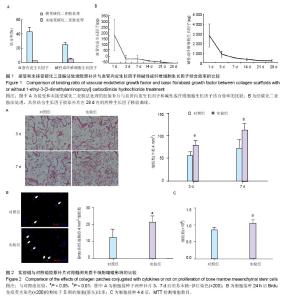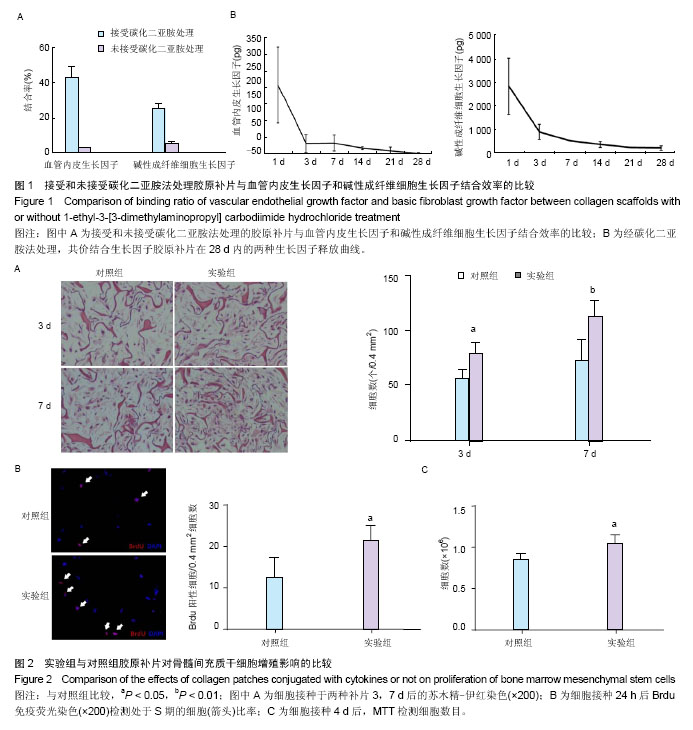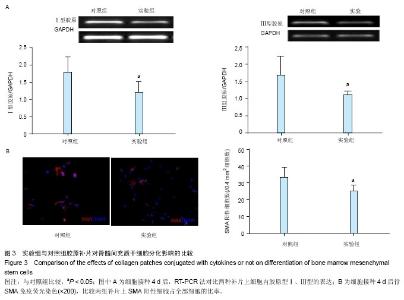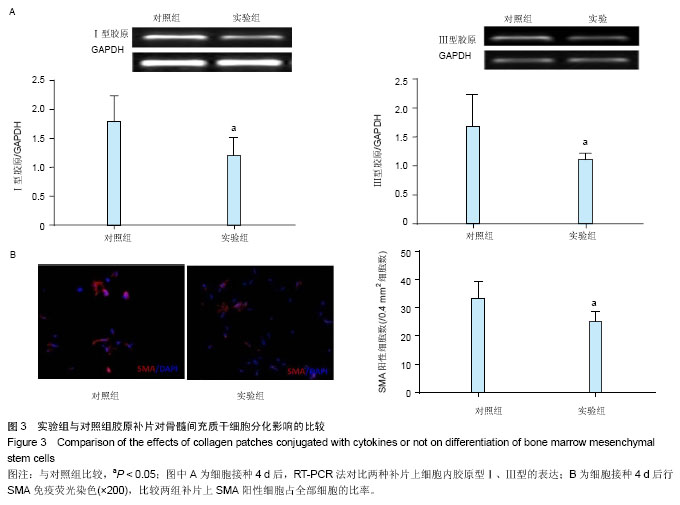| [1] Naderi H, Matin MM,Bahrami AR.Review paper: critical issues in tissue engineering: biomaterials, cell sources, angiogenesis, and drug delivery systems.J Biomater Appl. 2011;26(4): 383-417.
[2] Leor J,Aboulafia-Etzion S,Dar A,et al.Bioengineered cardiac grafts: A new approach to repair the infarcted myocardium? Circulation.2000;102(19 Suppl 3):III56-61.
[3] Zhang M,Methot D,Murry CE,et al.Cardiomyocyte grafting for cardiac repair: graft cell death and anti-death strategies.J Mol Cell Cardiol.2001;33(5):907-921.
[4] Sun XT,Ding YT,Yan XG,et al.Angiogenic synergistic effect of basic fibroblast growth factor and vascular endothelial growth factor in an in vitro quantitative microcarrier-based three-dimensional fibrin angiogenesis system. World J Gastroenterol.2004;10(17): 2524-2528.
[5] Godier-Furnémont AF,Martens TP,Koeckert MS,et al. Composite scaffold provides a cell delivery platform for cardiovascular repair.Proc Natl Acad Sci U S A.2011;108(19): 7974-7979.
[6] Olsen D,Yang C,Bodo M,et al.Recombinant collagen and gelatin for drug delivery.Adv Drug Deliv Rev. 2003;55(12): 1547-1567.
[7] Kumar MS,Kirubanandan S,Sripriya R,et al.Triphala incorporated collagen sponge--a smart biomaterial for infected dermal wound healing.J Surg Res. 2010;158(1):162-170.
[8] Wang W,Lin S,Xiao Y,et al.Acceleration of diabetic wound healing with chitosan-crosslinked collagen sponge containing recombinant human acidic fibroblast growth factor in healing-impaired STZ diabetic rats.Life Sci.2008;82(3-4): 190-204.
[9] Williams DF.On the nature of biomaterials. Biomaterials. 2009;30(30): 5897-5909.
[10] 康凯,曲辉,汤继权,等.利用人骨髓基质干细胞构建组织工程心脏瓣膜的体外实验[J].中国组织工程研究,2013,17(6):957-962.
[11] 康凯,曲辉,汤继权,等.共价结合生长因子的胶原补片改善大鼠室壁瘤修补术后移植细胞生存率的实验研究[J].中国胸心血管外科临床杂志,2013,20(4):451-456.
[12] Yao J,Jiang SL,Liu W,et al.Tissue inhibitor of matrix metalloproteinase-3 or vascular endothelial growth factor transfection of aged human mesenchymal stem cells enhances cell therapy after myocardial infarction. Rejuvenation Res.2012;15(5):495-506.
[13] Otto Beitnes J,Oie E,Shahdadfar A,et al.Intramyocardial injections of human mesenchymal stem cells following acute myocardial infarction modulate scar formation and improve left ventricular function.Cell Transplant.2012;21(8): 1697-1709.
[14] Tian H,Huang ML,Liu KY,et al.Inhibiting matrix metalloproteinase by cell-based timp-3 gene transfer effectively treats acute and chronic ischemic cardiomyopathy. Cell Transplant.2012;21(5):1039-1053.
[15] Malliaras K,Marban E.Cardiac cell therapy: where we've been, where we are, and where we should be headed.Br Med Bull. 2011;98:161-185.
[16] Krupnick AS,Kreisel D,Engels FH,et al.A novel small animal model of left ventricular tissue engineering.J Heart Lung Transplant.2002;21(2):233-243.
[17] Nakamuta JS,Danoviz ME,Marques FL,et al.Cell therapy attenuates cardiac dysfunction post myocardial infarction: effect of timing, routes of injection and a fibrin scaffold. PLoS One.2009;4(6):e6005.
[18] Zimmermann WH,Didié M,Wasmeier GH,et al.Cardiac grafting of engineered heart tissue in syngenic rats. Circulation. 2002;106(12 Suppl 1):I151-157.
[19] Miyagi Y,Zeng F,Huang XP,et al.Surgical ventricular restoration with a cell- and cytokine-seeded biodegradable scaffold.Biomaterials.2010;31(30):7684-7694.
[20] Gaetani R,Doevendans PA,Metz CH,et al.Cardiac tissue engineering using tissue printing technology and human cardiac progenitorcells.Biomaterials.2012;33(6):1782-1790.
[21] Lu WN, Lü SH, Wang HB,et al.Functional improvement of infarcted heart by co-injection of embryonic stem cells with temperature-responsive chitosan hydrogel. Tissue Eng Part A.2009;15(6):1437-1447.
[22] Caspi O, Lesman A, Basevitch Y, et al.Tissue engineering of vascularized cardiac muscle from human embryonic stem cells.Circ Res.2007;100(2):263-272.
[23] Takahashi H,Yokota T,Uchimura E,et al.Newly developed tissue-engineered material for reconstruction of vascular wall without cell seeding. Ann Thorac Surg.2009;88(4): 1269- 1276.
[24] Hao X, Silva EA, Månsson-Broberg A,et al.Angiogenic effects of sequential release of VEGF-A165 and PDGF-BB with alginate hydrogels after myocardial infarction. Cardiovasc Res.2007;75(1):178-185.
[25] Steffens GC,Yao C, Prével P, et al.Modulation of angiogenic potential of collagen matrices by covalent incorporation of heparin and loading with vascular endothelial growth factor. Tissue Eng.2004;10(9-10):502-509.
[26] Wu J,Zeng F,Huang XP,et al.Infarct stabilization and cardiac repair with a VEGF-conjugated, injectable hydrogel. Biomaterials.2011;32(2):579-586.
[27] 蔡敏倩,王晓杰,李校堃.胶原蛋白海绵的性质及其临床应用[J].中国组织工程研究与临床康复,2011,15(12):2270-2274.
[28] 迟妍妍,乐尧金,刘旭昭,等.胶原蛋白海绵的生物特性及体内降解吸收[J].中国组织工程研究,2014,18(34):5515-5519.
[29] Yeoh JS,de Haan G.Fibroblast growth factors as regulators of stem cell self-renewal and aging. Mech Ageing Dev. 2007; 128(1): 17-24.
[30] Zhang J,Xie SS,Han XX,et al.Effect of vascular endothelial growth factor on bone marrow-derived mesenchymal stem cell proliferation and the signaling mechanism. Nan Fang Yi Ke Da Xue Xue Bao.2011;31(10):1697-1700.
[31] Asahara T,Bauters C,Zheng LP,et al.Synergistic effect of vascular endothelial growth factor and basic fibroblast growth factor on angiogenesis in vivo. Circulation.1995;92(9 Suppl): II365-371. |



